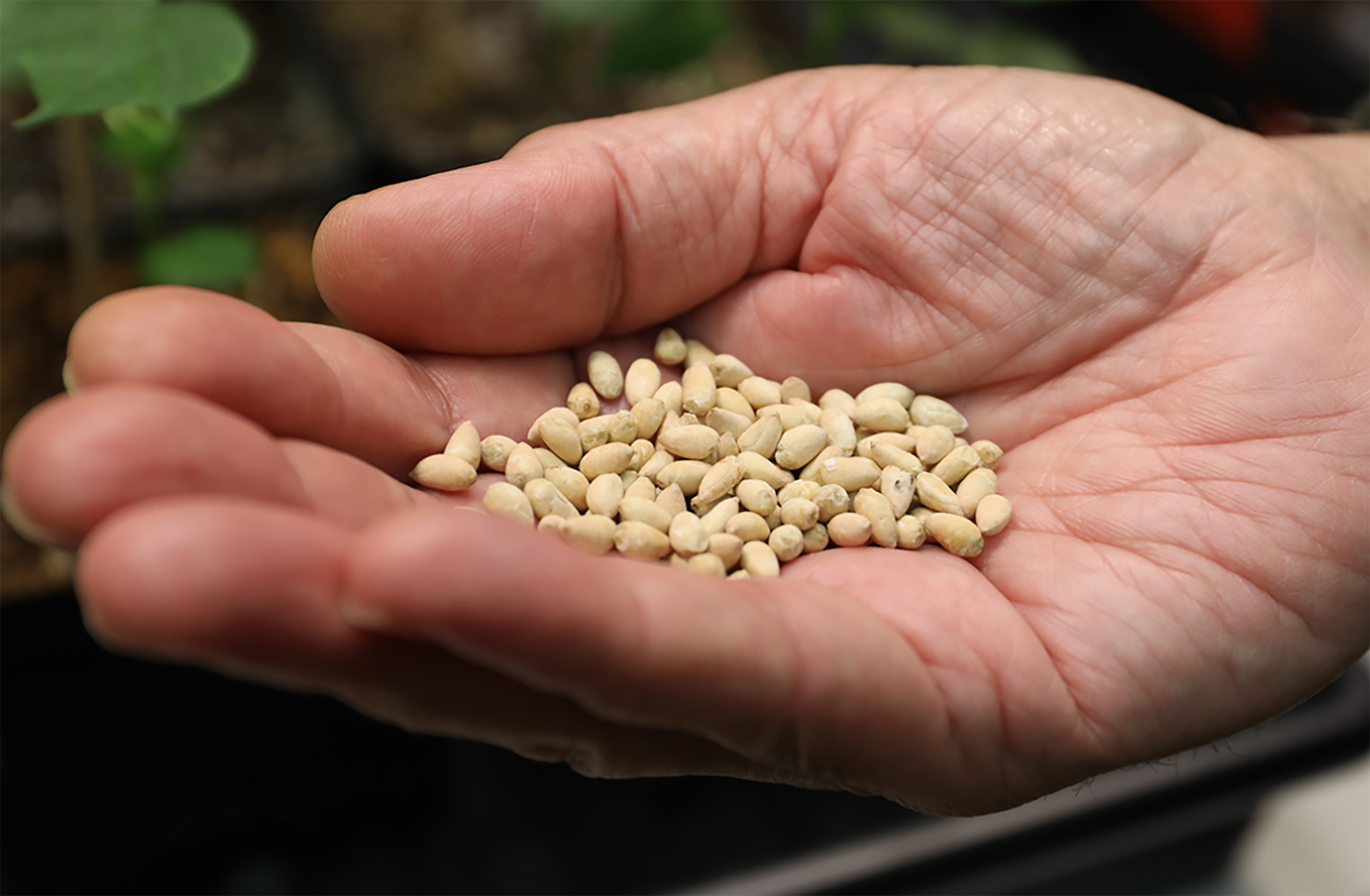
Texas A&M University and Uzbekistan Partner for Next Step Toward Humanitarian Use of Ultra-low Gossypol Cotton
August 13, 2025| |
Texas A&M AgriLife Research marks the initial step toward the commercial adoption of food-ingredient cottonseed, reaching a major milestone in increasing the value of cotton. After decades of research, Texas A&M AgriLife Research scientist Dr. Keerti Rathore has developed a cottonseed variety with ultra-low gossypol. This innovation unlocks the seed's potential as a valuable new food ingredient and feed source for poultry, swine, and fish.
The ultra-low gossypol cottonseed, TAM 66274, has been fully deregulated in the U.S. and is now ready for global adoption. According to the ISAAA GM Approval Database, TAM 66274 cotton is a genetically engineered cotton variety that expresses low levels of gossypol in the seed. Such a trait has opened the market to expand beyond the historically restricted market of dairy cows to feed poultry, swine, and aquaculture species in addition to direct use as a protein source for human consumption.
Uzbekistan has become the first country to formally partner with the Texas A&M University System to integrate this trait into its cotton crops. This collaboration will support Uzbekistan's national food security goals. This partnership is a significant step toward Rathore's goal of making cotton a dual-purpose crop—valued for both its fiber and its seed as a protein source. This development is expected to improve the sustainability of cotton farming worldwide and holds potential for U.S. cotton growers to benefit from shared genetic material in the future.
For more details, read the article in AgriLife Today.
| |
You might also like:
- FDA Approves Texas A&M's Ultra-Low Gossypol Cotton for Human and Animal Consumption
- GE Cotton Could Help Improve Food Security
- Selective Gene Silencing Leads to Ultra-low Gossypol Cottonseed
Biotech Updates is a weekly newsletter of ISAAA, a not-for-profit organization. It is distributed for free to over 22,000 subscribers worldwide to inform them about the key developments in biosciences, especially in biotechnology. Your support will help us in our mission to feed the world with knowledge. You can help by donating as little as $10.
-
See more articles:
-
Plant
- MIT and Harvard Scientists Boost Precision of Genome Editing
- Food Safety Minister Adopts FSANZ’s Labeling Rules for GM Food Without Added DNA
- Texas A&M University and Uzbekistan Partner for Next Step Toward Humanitarian Use of Ultra-low Gossypol Cotton
- EFSA Scientific Opinion Calls for Modernised Protein Assessment of GMOs
- Sweet Potato DNA Decoded, Reveals Ancestry
- International Team Develops Model to Analyze Potato's Growth-Defense Trade-off
-
Food
- 8th Asian Short Course on Agribiotechnology, Biosafety Regulation, and Communication (ASCA8)
- ISAAA, Inc. E-newsletter to Feature Exclusive Agri-biotech Insights Monthly
-
Read the latest: - Biotech Updates (December 17, 2025)
- Gene Editing Supplement (December 17, 2025)
- Gene Drive Supplement (February 22, 2023)
-
Subscribe to BU: - Share
- Tweet

